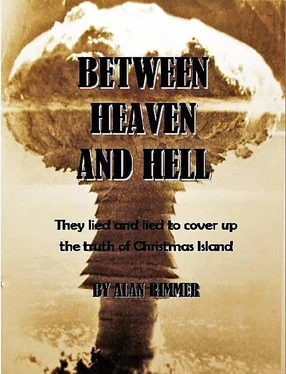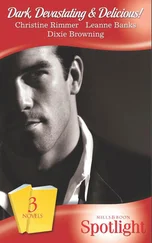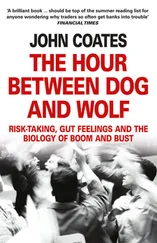It has been used to great affect to winkle out embarrassing information hidden away in government archives. Tony Blair is said to have remarked ruefully that it was one of his biggest mistake to introduce this legislation because of its propensity to reveal what politicians would like to stay hidden.
And so it proved in this case. A series of information requests were sent to the Ministry of Defence. And after a period of stonewalling, a raft of new material finally tumbled out of the archives. It proved to be the tipping point for the veteran’s campaign.
The first tranch of material to be released was the original weather charts relating to conditions over Christmas Island for the 24-hour period covering April 28, 1958. The blizzard of data clearly showed what all the politicians had been dancing around for years: there WAS rainfall in several areas in the hours following the explosion.
The charts reveal it rained between the following times: 2025-2037; 2136-2148; and 2155 to 2230. Bearing in mind the detonation took place at 1905, the charts show that at precisely one hour and 20 minutes after Grapple Y it rained for 12 minutes; 59 minutes later it rained for another 12 minutes, and seven minutes after that it rained for 35 minutes.
Notable on one chart was a comment: “large rainbow over the Port Camp at 2200 hrs.” This is just short of three hours after the shot. The charts are also peppered with the arcane symbols which weathermen use to denote rainfall: an inverted isosceles triangle with dots on the top.
Thousands of men were gathered in the Port Camp area at the times it rained, and this was the clearest evidence yet that there was rainfall over the area after the Grapple Y explosion, despite all the obfuscation by the Ministry of Defence.
But this crucial evidence was just the curtain-raiser. The Meteorological Office in Bracknell, Berkshire later released a report entitled “Weather and Winds During Christmas Island Nuclear Tests.”
This 10-page document was originally sent from the Director General at the Met Office, in response to a request by a senior official (his name is redacted) at Aldermaston. The official had requested meteorological data for Christmas Island for the period of the nuclear weapon tests 1957-58.
The report begins with the observation that the rainfall at the Main Camp on Christmas Island, “occurred only on 8 November 1957, and 22 August 1958 and then only as light showers.” No sign here of rain after Grapple Y, which was 18 April 1958.
But confusingly the report continues: “Although there is always the possibility that heavy showers fell elsewhere.”
We now know from the Met charts already discussed that it did indeed rain elsewhere, especially in the Port Camp area.
Any lingering doubts are finally dispelled when the report makes it clear that not only did it rain, but that the rainfall was actually caused by Grapple Y.
This revelation is repeated twice in the report; the first is in the main text which states that two hours after the blast, “precipitation reached the surface in a shower possibly caused by the bomb.” The second, and even clearer reference, is in Appendix 1 of the report which states: “Precipitation in sight, more than 5 km from station, reaching surface. Cumulonimbus from bomb.”
Cumulonimbus is an extremely dense, vertically developed cloud extending to great heights, usually producing heavy rains, thunderstorms, or hailstorms. Just for the sake of pedantry cumulonimbus is Latin for “rain heaps.”
This is prima facie evidence that Grapple Y created a thunderstorm which deposited rainfall on areas where servicemen were gathered thus exposing them to rainout.
According to the Meteorological Office, rain that originates above a radio-active cloud causes areas of heavy contamination just downwind of a nuclear blast. All the evidence suggests this phenomenon is precisely what occurred after Grapple Y.
The 50-year cover-up was beginning to unravel. But this remarkable document had not yet relinquished all its disturbing secrets. Buried in the text is a passage strongly indicating that servicemen were deliberately exposed to radioactive fallout.
This sinister possibility is revealed in a passage discussing wind directions recorded during the whole period of the Christmas Island tests, 1957-58.
The report, illustrated with charts and graphs, shows the prevailing winds during the bomb tests always blew away from the island, and certainly away from areas where the majority of men were billeted. But then the text takes a sudden startling turn:-
except for the period up to about 9 hours after the test at 1905 GMT on 28 April 1958 when the winds were light, and near to being southeasterly. Since the airfield and the camp were almost due northwest from the explosion, the winds on this occasion were examined in more detail.
So, Britain’s biggest ever bomb was detonated at the only time during the H-bomb testing programme when the winds were blowing over the island and directly toward the Main Camp where the majority of troops were living.
This immediately gives the lie to the official announcements in Parliament and elsewhere that nuclear bomb tests were only ever carried out when the wind direction ensured fallout was taken away from inhabited areas.
Clearly this was not the case for Grapple Y. But it gets worse. The weathermen then go on to calculate precisely when the fallout would arrive at the main campsite:-
Assuming particles were released at 2.4 km, 22.3 n miles to the south-east of the camp (direction about 142 degrees), it appears that those with fall speeds of about 1/3 m/s could have reached the camp at 2100 GMT (1200 local time). Heavier particles released from the thermonuclear cloud at greater altitudes could have arrived at the camp later.
Remember, this report with all its disturbing implications was compiled in response to a request from an Aldermaston bigwig on November 13, 1985.
This was at the height of the nuclear veteran’s battle for compensation with the Thatcher government. At the time servicemen and their organisations were being ridiculed for daring to suggest that the tests exposed them to radiation. They were criticised for making “unfounded allegations”, lectured about the safety precautions taken for tests, and were chided for suggesting that anyone was in any danger.
Yet all the time the Ministry of Defence was in possession of a this deeply disturbing document suggesting that not only were servicemen contaminated by rainout, but also that they were deliberately put in the path of fallout.
If this report had been released at the time (as it should have been) it would have caused uproar and doubtless would have led to a complete vindication of the veteran’s claims. It would also have focussed attention on Grapple Y, which was something the Ministry of Defence clearly wanted to avoid at all costs.
This last point cannot be emphasised too strongly. In Britain the powerful Campaign for Nuclear Disarmament (CND) had been formed in January 1958, just three and a half months before the Grapple Y explosion.
The movement, which numbered among its members Bertrand Russell, Canon John Collins, the Canon of St Paul’s Cathedral, J.B. Priestley, Kingsley Martin and the author Doris Lessing, was formed as a direct consequence of the Bikini atoll disaster four years earlier when the Bravo bomb had gone so disastrously wrong.
When the new organisation was presented to the public in Central Hall, Westminster, in February 1958, more than 2,000 people turned up. This unexpectedly large turnout encouraged the organisers to stage a 50-mile protest march from London to Aldermaston over the four-day Easter Period in early April. They said that if 60 or 70 people turned up, it would be enough to make the national newspapers.
Читать дальше












